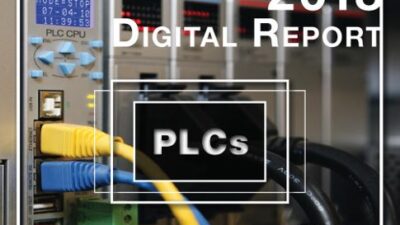Fort Lauderdale, FL – Fiber-optic cables are steadily replacing copper wires for signal transmission in many manufacturing, process control, and SCADA applications. Here are five reasons why fiber optics are preferable to copper cabling.
Fort Lauderdale, FL – Fiber optics, also called optical fibers, are microscopic strands of very pure glass with about the diameter of a human hair. Thousands of optical fibers, arranged in bundles, protected by a jacket, in optical cables, transmit light signals over long distances. Although similar to copper wire systems, fiber optics are steadily replacing copper wires as a means of communication signal transmission; applications include manufacturing, process control, and supervisory control and data acquisition.
CableOrganizer.com
gives five reasons why fiber optic cables are preferable to copper cabling for telecommunications and datacom network applications .
1. Fiber optic is more efficient and secure than copper cabling, transmitting information with greater fidelity. Fiber links offer more than 1,000 times as much bandwidth over distances more than 100 times farther than copper, and extra data security is provided since it is more difficult to tap than copper cable.
2. Fiber optic cable can carry more data than copper and for longer distances. It can transmit a signal as far as 80 km or beyond without need for amplification.
3. The glass-based cables don’t conduct electricity , which eliminates the need for grounding and makes them immune to electrical interference, even lightning. They can be used outdoors and in proximity to electrical cables.
4. Glass fibers are virtually free from corrosion . While copper is sensitive to water and chemicals, fiber optic runs almost no risk of being damaged by harsh elements, and can endure “living conditions” that coaxial cable cannot, such as direct contact with soil. And, while you may not have considered it….
5. of physical injury if it breaks. Since it transmits light, not electricity, handlers run no risk of injury from fire, sparking, or electrocution.
In 1999, an estimated $14.6 billion was spent on fiber optics items. These figures were attributed to the growing use of the Internet. Companies are increasingly using fiber optics for other purposes. Applications exist for manufacturing plants, computer offices, telemarketing networks, Internet broadband companies, online video providers, Ethernet users, medical offices, hospitals, financial institutions, and communications companies.
“Today’s increased ability to transmit more information over longer distances quickly has expanded the boundaries of technological development in many areas, including data networking, wireless and satellite communications, cable operations and broadcasting,” said Paul Holstein, co-founder and COO of CableOrganizer.com. “All of this has, in fact, become possible by the use of fiber optics, and as technology users insist upon improved performance, the demand for and use of fiber optics will continue to increase.”
Related reading from Control Engineering includes:
Product Research: Industrial Networks
– Control Engineering News Desk( Register here and scroll down to select your choice of eNewsletters free .)



